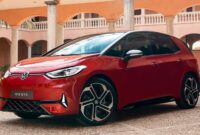
It’s no secret that the two biggest hurdles limiting EV adoption are the reach and availability of charging stations. Stellantis CEO Carlos Tavares addressed this hurdle at this week’s CES roundtable and clarified that the company has no plans to build a charging network in the US.
“Infrastructure is not part of Stellantis’ core business,” said Tavares. “This requires a significant investment of resources. We have no plans to build a fast charging network in the US, but do plan to sell chargers as part of our strategy.”
This strategy is different from that implemented by Stellantis in Europe. A year ago, the company announced a partnership with TheF Charging, a charging service startup, to create a new public charging network with more than 15,000 sites. However, this is consistent with Stellantis’ current US market approach, which includes the launch of Mopar’s in-house charging unit, starting with the Jeep 4xe and Chrysler plug-in hybrid electric vehicles.
The Wi-Fi enabled Level 2 charger supplies up to 32 amps/7.7kW, fully charging your Chrysler or Jeep PHEV in just two hours. It can be wired or plugged into an existing power source and is fully weather-resistant for outside use. Currently available at most Chrysler and Jeep dealers, also available through the Mopar eStore.
Stellantis is also focused on lowering EV costs. Tavares has previously expressed concern that the auto market is becoming too expensive and said EV costs need to be brought down by 40 percent.
To that end, Stellantis invests in battery technology. It partnered with Mercedes-Benz to invest in Factorial Energy, a Massachusetts-based developer of solid-state batteries. Factorial Energy claims its solid electrolyte materials and Factorial Electrolyte System Technology are safer and provide increased energy density compared to conventional lithium-ion batteries. As a result, solid-state batteries have the potential to increase mileage while reducing cost per kilowatt-hour (kWh).



